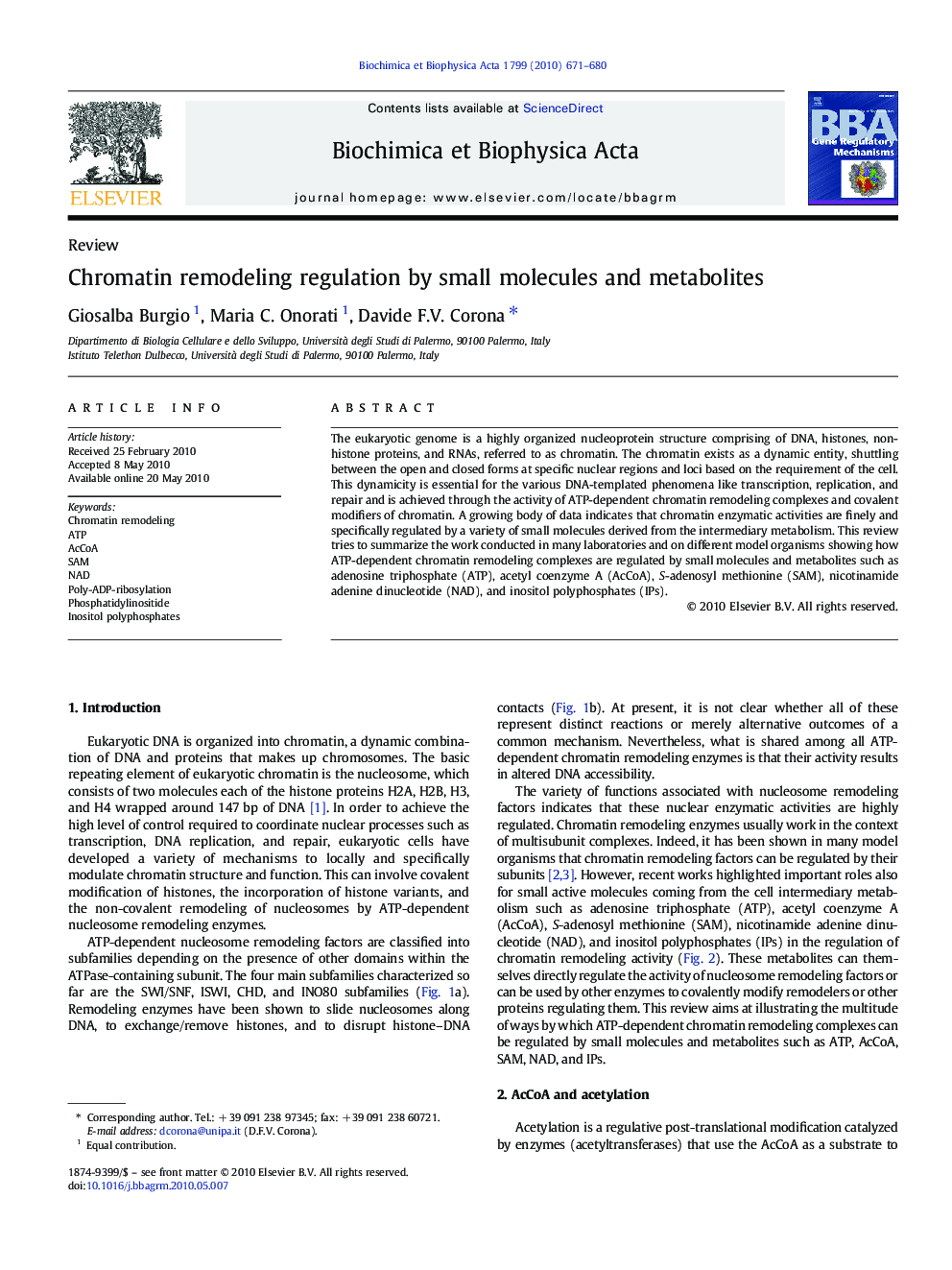| Article ID | Journal | Published Year | Pages | File Type |
|---|---|---|---|---|
| 1946727 | Biochimica et Biophysica Acta (BBA) - Gene Regulatory Mechanisms | 2010 | 10 Pages |
The eukaryotic genome is a highly organized nucleoprotein structure comprising of DNA, histones, non-histone proteins, and RNAs, referred to as chromatin. The chromatin exists as a dynamic entity, shuttling between the open and closed forms at specific nuclear regions and loci based on the requirement of the cell. This dynamicity is essential for the various DNA-templated phenomena like transcription, replication, and repair and is achieved through the activity of ATP-dependent chromatin remodeling complexes and covalent modifiers of chromatin. A growing body of data indicates that chromatin enzymatic activities are finely and specifically regulated by a variety of small molecules derived from the intermediary metabolism. This review tries to summarize the work conducted in many laboratories and on different model organisms showing how ATP-dependent chromatin remodeling complexes are regulated by small molecules and metabolites such as adenosine triphosphate (ATP), acetyl coenzyme A (AcCoA), S-adenosyl methionine (SAM), nicotinamide adenine dinucleotide (NAD), and inositol polyphosphates (IPs).
